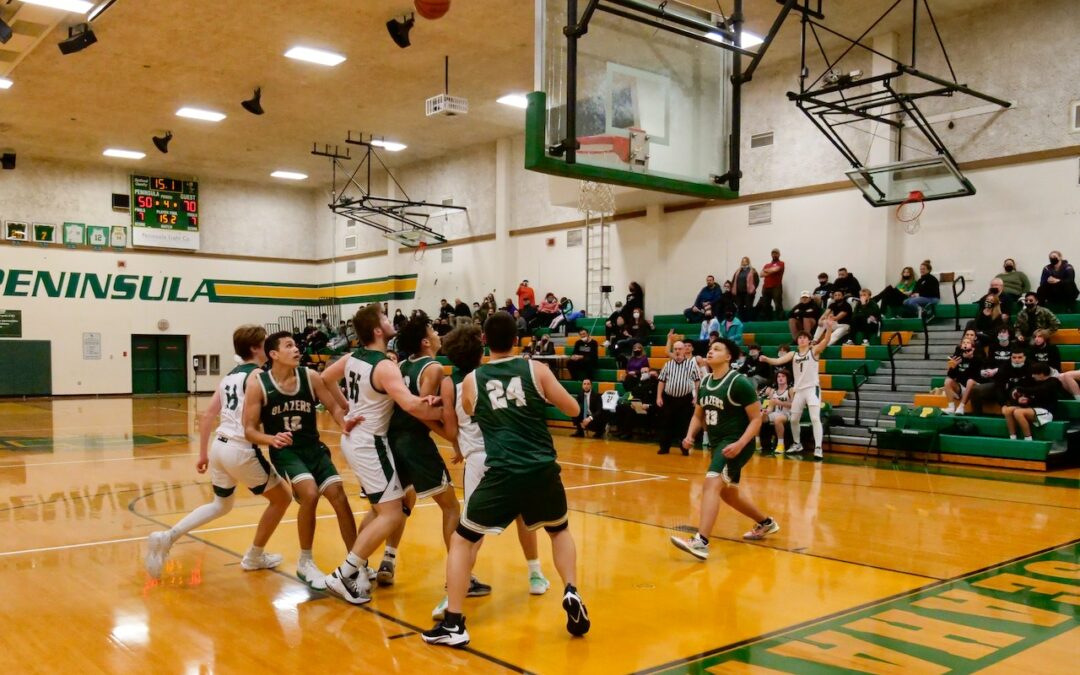In the dynamic world of youth basketball, defensive strategies play a pivotal role in determining the outcome of games. One such strategy that has gained significant attention and recognition is the “Pack Line Defense.” This defensive approach has revolutionized the way teams thwart opponents’ attacks and create opportunities for success on the court.
In this series of articles, we will take an in-depth look at the Pack Line Defense – its principles, tactics, and the reasoning behind its effectiveness. Whether you’re a seasoned coach aiming to refine your defensive playbook or a newcomer eager to grasp the nuances of basketball strategies, our exploration of this strategy will equip you with valuable insights to enhance your coaching prowess. Let’s embark on this journey to unravel the layers of this strategic gem and understand how it can transform your team’s defensive game.
Pros of the Pack Line Defense
1. Enhanced Rebound Positioning
With off-ball defenders positioned closer to the basket compared to conventional man-to-man defenses, securing rebounds off missed shots becomes notably advantageous. Crucially, each player must execute effective boxing-out techniques against their opponents, preventing them from securing second-chance scoring opportunities.
2. Reinforced Defense for Post Players
The dominance of post players can present formidable challenges for defenses, particularly in high school basketball. The compact structure of the pack line defense offers valuable nearby support to defenders contending with taller and more robust offensive counterparts in the post position.
3. Restriction of Interior Penetration
Shots attempted from within the key tend to yield higher field goal percentages. The pack line defense counteracts this by crowding the interior. This dissuades agile ball handlers from attempting to drive into the key. Consequently, the offensive team is coerced into settling for more challenging outside shots, shifting the dynamics of shot selection.
Cons of the Pack Line Defense
1. Hinges on Patience
The efficacy of the pack line defense hinges on cultivating unyielding patience and disciplined play within the team. Straying too far from the pack line in pursuit of a steal could lead to players finding themselves out of position or vulnerable to backdoor cuts.
This attribute of patience becomes especially critical in leagues without shot clocks. Offensive teams can exploit the lack of time pressure to probe until the defensive rotations break down.
2. Vulnerable to Outside Sharpshooters
The evolution of basketball has redefined the significance of the three-point shot. A shift towards perimeter shooting and ball rotation has rendered the pack line less effective against teams equipped with proficient outside shooters.
The rise of improved jump shots among players across different levels of play has contributed to the waning utility of the pack line defense.
3. Susceptibility against Pick-and-Roll Offense
This defense’s vulnerability is most apparent when confronted with the pick-and-roll offensive. The pick originates from the offensive post player, who sets a screen on the on-ball defender, effectively blocking their path.
If the on-ball defender fails to maneuver through the screen, the screener gains advantageous positioning. He can proceed to roll toward the basket unimpeded. Inadequate communication and a lack of robust help defense can expose the pack line defense to significant damage caused by pick-and-roll plays executed by the opposing offense.
Related: Better Basketball – The Pack Line Defense
Resources:
If you found this useful, don’t forget to check out additional blog posts at TeachHoops.com. Also, check out TeachHoops on Facebook, Twitter, Instagram and YouTube.




